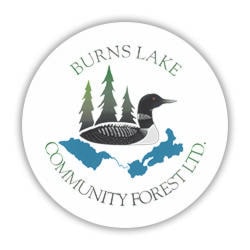Memories of the 2018 wildfires are still vivid and as the warmer weather arrives, the concerns around wildfire are high in the local area and across the province. The Burns Lake Community Forest (Comfor) knows that more preventative work is needed if wildfire impacts are to be limited on the community forest tenure and to protect the wildland/urban interface area associated with Burns Lake and the surrounding rural community.
To learn about the most effective ways to reduce local wildfire risk, the Comfor went to B.A. Blackwell & Associates Ltd. to complete a Landscape Fire Management Plan (LFMP). The Blackwell firm is recognized as a provincial expert in wildfire risk and has provided many communities with independent assessments and recommendations.
On May 15, 2019, Blackwell delivered a comprehensive LFMP report. The report provides an unbiased opinion on wildfire risk associated with the Comfor and considers the appropriate mitigation measures to reduce risk associated with long-term fire suppression, impacts of the mountain pine beetle, and concerns related to climate change.
The Blackwell report identified that 63 per cent of the landscape in the Burns Lake Comfor is composed of hazardous fuel types. Included in the areas identified as high hazard zones are areas designated as reserves for other values including Old Growth Management Areas (OGMAs) and Established Visual Quality Objectives (EVQOs). In the plan, 8.7 per cent of the existing OGMAs and 8.3 per cent of EVQOs are within the proposed treatment and salvage areas.
The Blackwell plan emphasizes that to “ignore or restrict the treatment of these areas will limit the effectiveness of this plan and substantially limit suppression resources ability to suppress or contain catastrophic wildfire within this tenure.”
Frank Varga, Comfor Manager said about the plan, “I am excited about receiving this comprehensive plan that supports and validates our efforts in fire ecosystem-based management. We are also excited that we have a plan that gives us direction to address local concerns for community protection. Our goals are to be stewards of the land for the long term, and to continue to provide benefits to the community and to our partners. With the memory of the 2018 fire season, and a very early start in 2019 - the Lejac Fire just outside of Fraser Lake within the Regional District of Bulkley Nechako - we know that reducing the risk of fire through fuel mitigation is a top priority.”
On April 26, at the Wildfire Resilience conference in Burns Lake, Brent May, District Manager from the local Ministry of Forests, Lands, Natural Resource Operations and Rural Development made a commitment to support the Comfor wildfire plan implementation by amending landscape constraints as required to enable successful implementation.
On June 4, Varga, May, and wildfire prevention officer Shannon Irvine toured the areas identified as posing imminent threats. (Page 53 figure 25 of Blackwell report)
Recommendations for priority wildfire mitigation area have been identified for the following factors:
Wildfire Risk Reduction for Burns Lake and surrounding First Nation communities; the communities of Decker Lake, Tchesinkut Lake, and Sheraton subdivision, particularly from wildfires approaching from the south.
Community infrastructure; critical fuel breaks; communications infrastructure, such as repeaters on Boer mountain; the Babine Forest Products mill; and critical infrastructure such as powerlines.
The Comfor is committed to seeing this project come to fruition with the following proposed timeline.
July 25: Public and First Nations Communication and Engagement Sessions open house at the Comfor office to present tactical plans.
Aug. 1: Have a draft strategic fire prescription in place to support the start of operational activities commencing on Sept. 1, 2019.
Sept. 1 2019: Commence harvest operations of year 1 (Very High Priority) areas.
Spring of 2020: Hazard Abatement Activities, including finalization of detailed tactical fire prescriptions for prescribed burns and machine piling as required to support the tactical fire prescription.
Fall 2020: Complete prescribed burn of year 1 (Very High Priority Area), commence year 2 (high Priority Areas).
Wildfire risk reduction is a shared responsibility and managing forest fuels on Crown land is just one step in reducing the risks in a community. Being FireSmart is about learning how to live in a fire-prone environment and taking the necessary steps to protect your family, property and community from wildfires. Over time, FireSmart principles have been shown to effectively reduce the risk of wildfire-related losses under even the most extreme conditions. Please visit http://www.firesmartbc.ca for more information.
The report can be found on the Burns Lake Community Forest website at http://blcomfor.com/wp-content/uploads/2019/05/Burns-Lake-LFMP_14May2019_FINAL.pdf or on our Facebook page, and or by contacting the community forest office at 153 Francois Lake Dr, 250-692-7724
For More Information, contact President Crystal Fisher at 250-692-7724.
